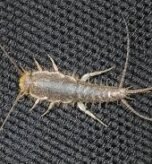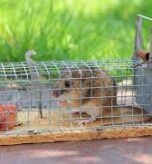Carpenter ants, often mistaken for termites due to their wood-damaging behavior, pose a significant threat to the structural integrity of your home. Unlike termites, these ants do not eat wood. Instead, they excavate it to create nests and tunnels, which can substantially weaken a building’s support. Effective carpenter ant control is crucial to mitigate this risk and prevent costly structural harm.
How to Identify Carpenter Ants
Accurate identification is the first step in effective carpenter ant control. These ants are among the largest you will find in the United States, typically ranging from 0.25 to 0.75 inches long. Their color can vary from black to reddish-brown.
Key distinguishing features of carpenter ants include:
- Body Shape: They have a narrow, pinched waist and a smooth, rounded back. In contrast, termites have a broader waist and a more cylindrical body.
- Antennae: Carpenter ants have distinctly bent (elbowed) antennae, while termites have straight, beaded antennae.
- Wings: Winged carpenter ants, or swarmers, have two pairs of wings. The front wings are much larger than the back wings. Termite swarmers, on the other hand, have two sets of wings that are the same size.
Signs of a Carpenter Ant Infestation
Understanding what attracts carpenter ants and recognizing the early signs of their presence is vital for timely intervention and effective carpenter ant control.
What Attracts Carpenter Ants?
Carpenter ants are primarily drawn to moist, decaying wood because it is easy for them to excavate. Common indoor nesting sites include moisture-damaged areas around chimneys, skylights, bathtubs, and window sills. Outdoors, they often nest in tree stumps, logs, and hardwood trees with holes. Beyond nesting material, they are also attracted to food sources like sweets, meats, and the sugary honeydew produced by aphids in trees.
Key Signs You Need Carpenter Ant Control
Early detection is paramount to preventing extensive damage. You should look out for these indicators:
- Sawdust Piles (Frass): Carpenter ants push the wood particles they excavate out of their nests. These piles look like sawdust and may contain parts of dead ants.
- Rustling or Scratching Noises: A faint rustling sound coming from within your walls, especially at night, can indicate active excavation.
- Winged Swarmers: The appearance of large, winged ants emerging from ceilings or walls, particularly in the spring, is a strong sign of a mature colony.
- Ant Trails: You might observe long trails of large black ants on your lawn or along the edges of walls. Foraging ants can travel up to 100 yards from their nest.
- Smooth Tunnels in Wood: Carpenter ants create smooth, clean tunnels in wood. This distinguishes their damage from that of termites, which leave mud and debris in their galleries.
Effective Carpenter Ant Control Strategies
Addressing an infestation requires a multi-faceted approach. The single most important task is locating the nest.
The Importance of Finding the Nest for Carpenter Ant Control
You must find and destroy the main nest to eliminate the colony. Simply killing the foraging ants you see will not solve the problem.
- Follow the Ant Trails: Observe foraging ants, especially after dark, as they travel between their nest and food sources.
- Listen for Sounds: Tap on wooden surfaces and listen for rustling sounds, which can indicate an active nest.
- Use Baits: Setting out attractive food like diluted honey can help you establish ant trails that lead directly to the nest.
DIY Carpenter Ant Control Methods
For minor infestations, you can employ several DIY methods.
- Baits: Borax-based baits are highly effective. The slow-acting poison allows worker ants to carry the bait back to the colony, ultimately killing the queen.
- Boric Acid or Diatomaceous Earth (DE): You can puff these dusts directly into identified nest areas. Boric acid is a stomach poison, while DE dehydrates the ants.
- Insecticide Sprays: Non-repellent insecticides can be applied as a perimeter treatment around your home’s exterior to create a barrier.
- Natural Repellents: Essential oils like peppermint or tea tree oil mixed with water can repel ants when sprayed along their trails.
Carpenter Ant Control Through Prevention
Preventing future infestations primarily involves eliminating the conditions that attract them.
- Control Moisture: Fix all leaks promptly and ensure good ventilation in bathrooms, basements, and crawl spaces.
- Remove Decaying Wood: Haul away rotting stumps and logs from your yard. Keep firewood stacked away from your house.
- Trim Vegetation: Trim back any trees or bushes that touch your home, as branches can serve as a bridge for ants.
- Seal Entry Points: Seal any cracks or gaps around windows, doors, pipes, and your foundation with caulk.
- Manage Food Sources: Store all food in airtight containers and clean up crumbs and spills immediately.
When to Call a Professional for Carpenter Ant Control
While DIY methods can be effective for minor issues, professional pest control is often recommended for carpenter ant infestations.
You should seek professional help if:
- You continue to see ants despite your DIY efforts.
- You see signs of significant damage, such as large sawdust piles.
- You cannot locate the nest.
Professional exterminators have the expertise, specialized tools, and more potent products needed to implement comprehensive and targeted carpenter ant control. Investing in a professional service can be cheaper in the long run by preventing repeated infestations and costly structural repairs.
Conclusion
Carpenter ants pose a serious threat to your property due to their wood-excavating habits. Understanding their biology, identifying the signs of an infestation, and implementing a combination of preventive measures and targeted carpenter ant control strategies are essential. By maintaining a dry, clean environment and removing attractants, you can significantly reduce the risk of an infestation. For an established or persistent problem, consulting a qualified pest management professional is the most reliable approach to ensure complete eradication and the long-term protection of your home.



